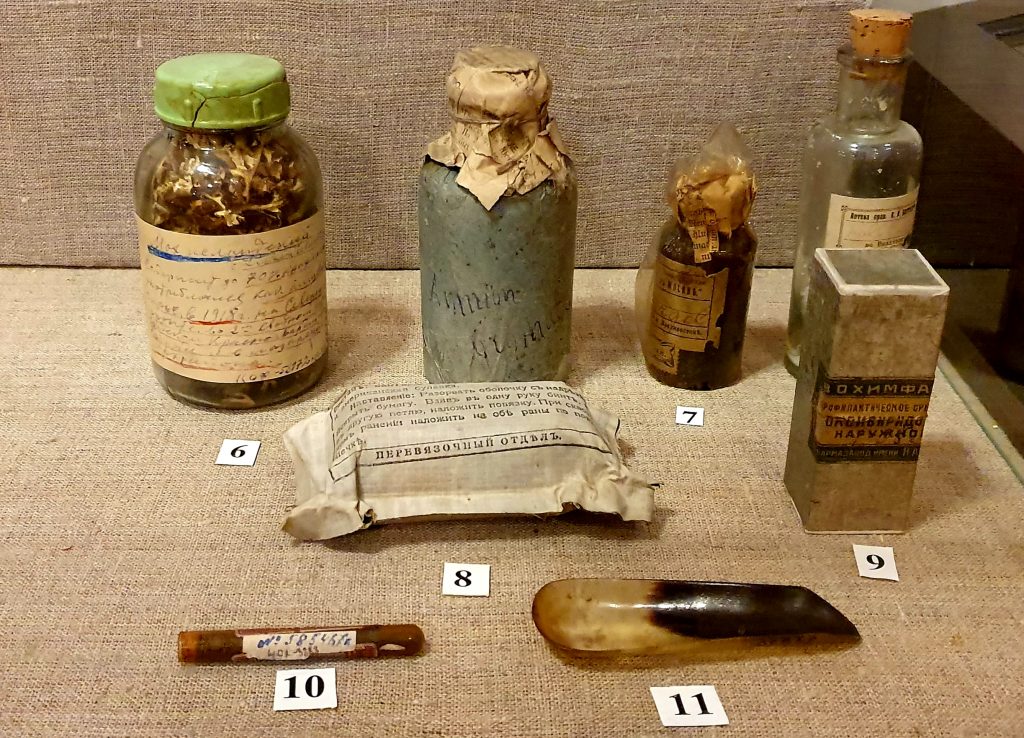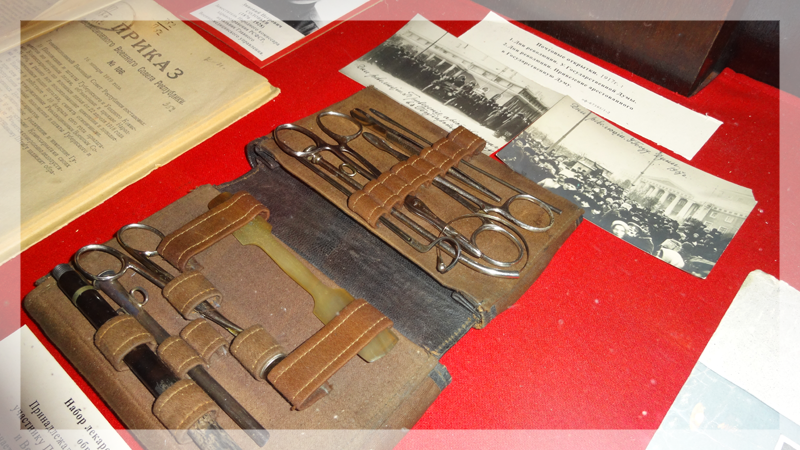This section is dedicated to the development of medical industry during the Civil War. The birthday of Soviet military medicine can be considered December 7, 1917, when the Council of People's Commissars of the Republic issued a decree on the appointment of a Bolshevik-doctors collegium to head the Main military sanitary Department.
At the same time, the foundations of the Soviet health care system were proclaimed: national character, preventive orientation, provision of generally available free qualified medical care, and the fight against social diseases (tuberculosis, alcoholism, etc.).
In the showcases of the exposition there are medical items of the Civil War period, among them there are some sets: for the study of the water chemical composition, feldsher's pocket medical, doctor’s medical instruments, and hospital G-2, as well as photos and documents of famous war participants (N. I. Zavalishina, V. E. Kandelaki, R. N. Budrina, etc.)
The exposition shows the significant role of women who participated in the Civil war, who showed heroism, mercy and humanity. The activists of the Russian Red Cross society that are nurses and ward maids were loved nation-wide on all fronts. One of the showcases contains samples of medicines and dressings from those years.
It is obvious that the medical institutions of the White Army were much better supplied than those of the Red Army. The White Russians were assisted by countries such as France, Germany, Sweden, and others, which supplied them not only with medicines, but also with weapons, uniforms, and food.
The exposition widely presents items of uniforms of military medics who participated in the Civil War: caps, a field jacket, a holster for a revolver, a nurse's apron, etc. Statuettes are displayed on the platforms: "Senior medical assistant of the Red Army", 1921, and "Senior doctor of the regiment", 1922 by the sculptor P. D. Magnushevsky.
Posters of that time are undoubtedly interesting: "Beware of jail fever!" - publications of the political Department of the Western front, 1919; " Comrades! Fight the infection! Destroy the louse!!"
The exposition also shows documents on measures taken by the Soviet state in the fight against the infectious diseases. These are the decrees "On measures to combat epidemics", "On mandatory smallpox vaccination" and "On measures for typhus".






